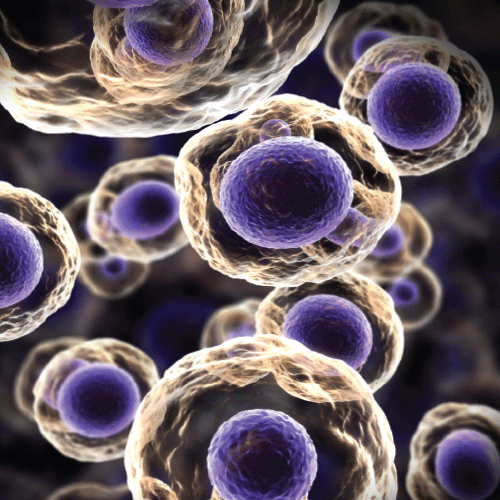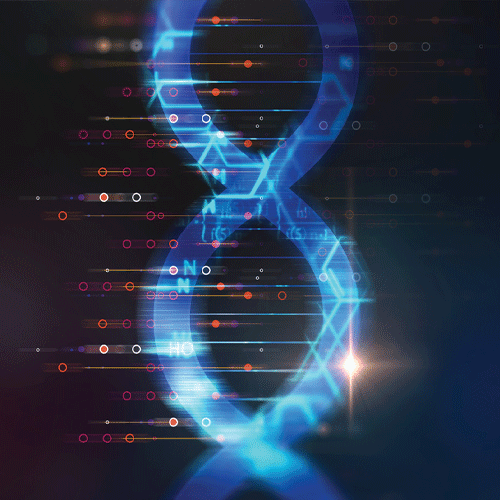Cancer and Genomics
Cancer is a collection of diseases that are characterized by uncontrolled growth of cells and their spread to surrounding tissues. All cancers are genetic diseases because changes in the genes that control cell growth and division are involved. However, only about 5% of cancers are strongly hereditary – primarily caused by mutations that are inherited from parent to child. Therefore, most cancers do not result from inherited mutations, but instead develop from an accumulation of DNA damage acquired during our lifetime. These cancers begin with a single normal cell that becomes genetically damaged. The transformation from that initial cell into a tumor is a stepwise progression. The number of genetic mutations that are required to convert a genetically normal cell into an invasive tumor is not known but most likely varies among cancer types. These genetic changes may involve single letter or base substitutions, large deletions or duplications, or chromosomal rearrangements impacting vast sections of the genome. Most cancer cells have a number of both large-scale chromosome abnormalities and single letter mutations.
 Historically, the diagnosis and staging of cancers has been based on the appearance of the cancer cells under a microscope and the spread to surrounding or distant tissues. Treatment decisions and options are often based upon this information. However, in many cases, individuals with similar-appearing tumors will show markedly different responses to treatment. We now know that differences at the molecular level, not visible under a microscope, are responsible for the varying outcomes.
Historically, the diagnosis and staging of cancers has been based on the appearance of the cancer cells under a microscope and the spread to surrounding or distant tissues. Treatment decisions and options are often based upon this information. However, in many cases, individuals with similar-appearing tumors will show markedly different responses to treatment. We now know that differences at the molecular level, not visible under a microscope, are responsible for the varying outcomes.
Microarray-based expression studies can be used to identify which genes are activated or silenced in the formation of cancer. Expression patterns can classify patients into groups that correlate with cancer subtypes and responses to a specific drug or clinical outcome. If validated, these differences can be used to predict outcomes for new patients, helping physicians identify the most optimal treatment or course of action. Microarray experiments are currently too cumbersome to perform in a clinic, so they are not likely to be used routinely to diagnosis patients.
However, once a small subset of the genes most relevant to predicting disease or treatment outcome is discovered, it becomes possible to detect the corresponding protein levels in the cancer cells using specially labeled antibodies. For example, some of these proteins have been identified for breast cancer. Detecting whether each protein is present and at what level is useful in determining which therapy will be most effective for treatment.
In the 2008 Annual Report to the Nation, the National Cancer Institute noted that both the incidence and death rate for all cancers combined is decreasing. While cancer death rates have been declining for several years, this marks the first decline in cancer incidence, the rate at which new cancers are diagnosed.
Hereditary Nonpolyposis Colorectal Cancer (HNPCC®) is a high school lab, developed at HudsonAlpha, which focuses on inherited cancer risk and detection. Students complete a family pedigree and interpret the pedigree to determine individual family member’s risk for developing HNPCC. Students then complete a gel electrophoresis-based DNA analysis to diagnose family members with the HNPCC linked mutation. The lab introduces students to a genetic counselor and laboratory technician for career exploration. The kit is available for purchase through a partnership with Carolina Biological Supply.For more information, and to find out how to purchase this kit, click here.


